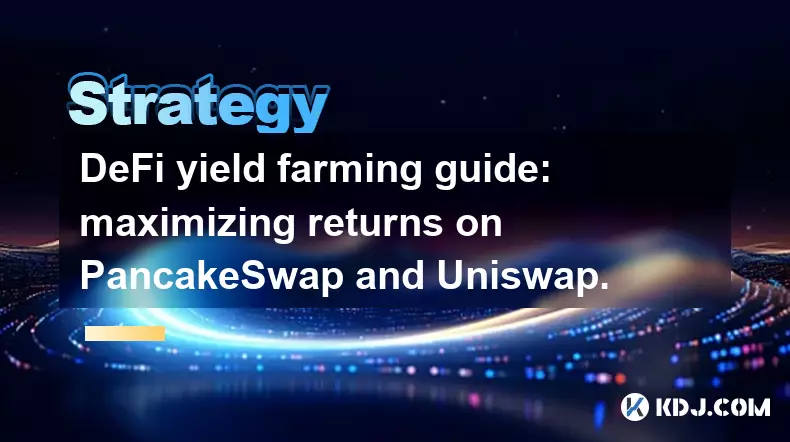-
 bitcoin
bitcoin $103094.926080 USD
3.95% -
 ethereum
ethereum $3398.208576 USD
6.43% -
 tether
tether $0.999971 USD
-0.04% -
 xrp
xrp $2.326205 USD
9.96% -
 bnb
bnb $947.145845 USD
4.46% -
 solana
solana $160.315987 USD
7.54% -
 usd-coin
usd-coin $1.000014 USD
0.01% -
 tron
tron $0.288163 USD
2.37% -
 dogecoin
dogecoin $0.164881 USD
5.50% -
 cardano
cardano $0.536519 USD
7.14% -
 hyperliquid
hyperliquid $40.526327 USD
6.62% -
 chainlink
chainlink $14.898178 USD
5.68% -
 bitcoin-cash
bitcoin-cash $483.923206 USD
4.44% -
 ethena-usde
ethena-usde $0.999280 USD
0.02% -
 stellar
stellar $0.276354 USD
6.32%
A Beginner's Guide to Shorting Bitcoin (BTC) with Leverage
Leveraged Bitcoin shorting amplifies gains and losses, allowing traders to profit from price declines using borrowed funds, but carries high risks like liquidation and funding costs.
Oct 30, 2025 at 03:55 pm

Understanding Leverage in Bitcoin Shorting
1. Leverage allows traders to control a larger position using a smaller amount of capital. In the context of shorting Bitcoin, this means amplifying exposure to downward price movements without owning the asset directly. A 10x leverage, for example, lets a trader open a position ten times larger than their initial margin.
2. Exchanges offering derivatives such as perpetual futures or inverse contracts enable leveraged shorting. These platforms allow users to borrow BTC or trade synthetic instruments that profit when prices fall. The use of leverage increases both potential gains and risks significantly.
3. Margin is required to maintain a leveraged short position. If the market moves against the trader—meaning Bitcoin’s price rises—the margin level drops. When it falls below a maintenance threshold, a liquidation occurs, wiping out the invested capital.
4. Funding rates are crucial in perpetual contracts. Short sellers may pay or receive funding depending on market sentiment. During periods of high long interest, shorts often pay funding, which can erode profits over time if held for extended durations.
5. Risk management tools like stop-loss and take-profit orders help mitigate losses. Setting these parameters ensures positions close automatically at predefined levels, protecting traders from sudden volatility spikes or exchange downtime.
Steps to Execute a Leveraged Short on BTC
1. Choose a reputable cryptocurrency exchange that supports leveraged trading, such as Bybit, Binance, or OKX. Ensure the platform offers sufficient liquidity for BTC pairs and has a proven track record of security and uptime.
2. Deposit collateral into your futures or margin account. This can be stablecoins like USDT or the base cryptocurrency itself, depending on whether the contract is quoted in fiat or crypto terms.
3. Navigate to the BTC/USDT perpetual contract section and select the desired leverage. While higher leverage increases profit potential, it also raises the chance of early liquidation during adverse price swings.
4. Open a “sell” order, indicating a short position. For instance, selling 1 BTC worth of contracts at $60,000 implies you will profit if the price drops below that level before closing the trade.
5. Monitor the position actively. Price alerts, real-time charts, and liquidation price indicators should be used consistently to avoid unexpected margin calls or forced exits.
Risks and Market Dynamics of Short Selling BTC
1. Bitcoin’s price can experience rapid upward surges due to macroeconomic news, institutional adoption, or whale accumulation. Such rallies can trigger cascading liquidations among short sellers, exacerbating losses through squeeze dynamics.
2. High volatility makes timing essential. Entering a short too early during a bullish trend can result in prolonged drawdowns, especially when funding fees accumulate daily.
3. Exchange-specific risks include technical outages during peak volatility, slippage on large orders, and changes in fee structures or leverage limits imposed unilaterally by the platform.
4. Regulatory scrutiny affects leveraged trading availability. Some jurisdictions restrict or ban derivatives trading, limiting access based on geographic location or requiring KYC verification.
5. Liquidation risk is the most immediate threat to leveraged shorts. A single candlestick move of 10–15% against the position can eliminate the entire margin, particularly at 25x leverage or above.
Frequently Asked Questions
What happens when a short position gets liquidated?When the mark price reaches the liquidation level, the exchange automatically closes the position to prevent further losses. The trader loses the margin allocated to that trade, and any remaining balance is forfeited to cover potential negative equity.
Can I short Bitcoin without using leverage?Yes, some platforms allow spot margin trading where you borrow BTC to sell immediately and repay later at a lower price. This method avoids extreme risks tied to high leverage but requires interest payments on borrowed assets.
How do I calculate my potential profit on a short trade?Subtract the closing price from the entry price, then multiply by the number of units sold. For example, shorting 1 BTC at $60,000 and covering at $50,000 yields $10,000 in gross profit, minus fees and funding costs.
Are there alternatives to shorting Bitcoin directly?Traders can use options contracts with put positions or invest in inverse ETFs where available. These instruments offer defined risk profiles compared to open-ended futures contracts, though they may come with time decay and premium costs.
Disclaimer:info@kdj.com
The information provided is not trading advice. kdj.com does not assume any responsibility for any investments made based on the information provided in this article. Cryptocurrencies are highly volatile and it is highly recommended that you invest with caution after thorough research!
If you believe that the content used on this website infringes your copyright, please contact us immediately (info@kdj.com) and we will delete it promptly.
- MUTM, Crypto Mutuum, V1 Launch: The DeFi Project to Watch in 2025
- 2025-11-06 22:45:01
- Free Crypto, Bitcoin Mining & Passive Income: The 2025 Guide
- 2025-11-06 23:00:02
- UAE, Blockchain, and Crypto Power: A New Era?
- 2025-11-06 22:50:01
- Binance Airdrops: Diving into UnifAI (UAI) and Belong (LONG) Tokens
- 2025-11-06 21:05:01
- Dropee Price Prediction: Unlocking the Future Value of this GameFi Token
- 2025-11-06 20:50:02
- Blue Gold's SGC: Pre-Registration Opens for Gold-Backed Digital Token
- 2025-11-06 21:20:02
Related knowledge

Navigating a crypto bear market: strategies for survival and profit.
Nov 05,2025 at 02:04pm
Navigating a Crypto Bear Market: Strategies for Survival and Profit Surviving a crypto bear market requires more than just patience—it demands strateg...

Ethereum gas fees explained: how to save money on your transactions.
Nov 04,2025 at 04:01pm
Ethereum Gas Fees: Understanding the Basics1. Ethereum operates on a decentralized network where every transaction requires computational power to exe...

Kraken margin trading explained: a complete guide to leveraging your positions.
Nov 04,2025 at 02:19pm
Kraken Margin Trading Overview1. Kraken is one of the most established cryptocurrency exchanges offering margin trading to experienced traders seeking...

NFT flipping for beginners: a step-by-step guide to profitable trading.
Nov 02,2025 at 11:54pm
NFT Flipping Basics: Understanding the Market1. NFT flipping involves purchasing non-fungible tokens at a lower price and reselling them for profit, o...

DeFi yield farming guide: maximizing returns on PancakeSwap and Uniswap.
Nov 05,2025 at 12:20am
Understanding Yield Farming on PancakeSwap and Uniswap1. Yield farming has become a central activity in the decentralized finance (DeFi) space, allowi...

How to find the next 100x altcoin: a fundamental analysis checklist.
Nov 02,2025 at 09:54pm
Decentralized Exchanges Are Reshaping Trading Dynamics1. Decentralized exchanges (DEXs) have emerged as a powerful alternative to centralized platform...

Navigating a crypto bear market: strategies for survival and profit.
Nov 05,2025 at 02:04pm
Navigating a Crypto Bear Market: Strategies for Survival and Profit Surviving a crypto bear market requires more than just patience—it demands strateg...

Ethereum gas fees explained: how to save money on your transactions.
Nov 04,2025 at 04:01pm
Ethereum Gas Fees: Understanding the Basics1. Ethereum operates on a decentralized network where every transaction requires computational power to exe...

Kraken margin trading explained: a complete guide to leveraging your positions.
Nov 04,2025 at 02:19pm
Kraken Margin Trading Overview1. Kraken is one of the most established cryptocurrency exchanges offering margin trading to experienced traders seeking...

NFT flipping for beginners: a step-by-step guide to profitable trading.
Nov 02,2025 at 11:54pm
NFT Flipping Basics: Understanding the Market1. NFT flipping involves purchasing non-fungible tokens at a lower price and reselling them for profit, o...

DeFi yield farming guide: maximizing returns on PancakeSwap and Uniswap.
Nov 05,2025 at 12:20am
Understanding Yield Farming on PancakeSwap and Uniswap1. Yield farming has become a central activity in the decentralized finance (DeFi) space, allowi...

How to find the next 100x altcoin: a fundamental analysis checklist.
Nov 02,2025 at 09:54pm
Decentralized Exchanges Are Reshaping Trading Dynamics1. Decentralized exchanges (DEXs) have emerged as a powerful alternative to centralized platform...
See all articles










































































